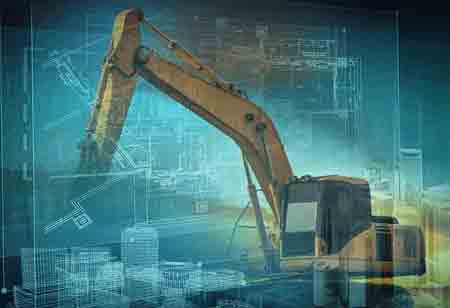Thank you for Subscribing to Construction Business Review Weekly Brief
Specials
- MEP Canada
- Kitchen and Bath
- Decking Canada
- Architectural Glass Europe
- MEP APAC
- Construction Saudi Arabia
- German Apartment and Condominium Contractors
- Construction Law APAC
- Outdoor Construction
- Foundation Construction Canada
- Building Sealing Solutions Europe
- Apartment and Condominium Contractors Canada
- Cold Storage Construction APAC
- Precast Concrete Europe
- Construction Staffing Europe
- Pre-Construction Services
- Flooring System APAC
- Scaffolding Canada
- Swimming Pool Construction Canada
- Construction Management Canada
- Dummy
- Building Restoration and Maintenance Canada
- Residential Construction
- Concrete Canada
- Construction Cladding Europe
- Construction Cladding APAC
- Concretes, Aggregates and Construction Materials APAC
- Concretes, Aggregates and Construction Materials Europe
- Commercial Contractors Europe
- Commercial Contractors APAC
- Cold Storage Construction Canada
- Flooring Systems Europe
- Construction Management APAC
- Landscaping Canada
- Construction Coating Europe
- Construction Tech Startups Europe
- Insulation Services Europe
- Mechanical Contractor Canada
- Mould Remediation and Testing Europe
- Swimming Pool Construction APAC
- Construction Engineering Services
- Mechanical Electrical and Plumbing
- Roofing Systems Europe
- Architectural Glass APAC
- Startups APAC
- Forensic and Owners Representative
- Flooring System
- Waterproofing APAC
- Wall Systems
- Safety and Compliance Europe
- Construction Bidding and Auctions
- Modular and Prefab Construction
- Architectural Glass
- Construction MENA
- Construction Demolition and Recycling Europe
- Modular Construction Europe
- Construction Interiors
- Steel Building APAC
- HVAC
- Doors and windows
- Modular Construction APAC
- Insulation, Coating and Waterproofing
- Building Information Modeling APAC
- Sustainable Construction APAC
- Building Restoration and Maintenance
- Commercial Contractors
- Specialty Construction
- Construction Engineering Canada
- Construction Engineering MENA
- Modular Construction Canada
- Roofing and Siding Systems
- Construction Latam
- Workforce Management and Staffing
- Roofing Systems APAC
- Construction Consulting
- Steel Building Europe
- Construction Demolition and Recycling APAC
- Safety and Compliance APAC
- Concretes, Aggregates and Materials
- Construction Cladding
Modernizing the Concrete Industry: Key Equipment Developments
The concrete industry is essential to modern construction, significantly influencing efficient and reliable equipment operations.

By
Construction Business Review | Friday, February 21, 2025
Stay ahead of the industry with exclusive feature stories on the top companies, expert insights and the latest news delivered straight to your inbox. Subscribe today.
The concrete industry is essential to modern construction, significantly influencing efficient and reliable equipment operations. Machinery enhances the quality, durability, and aesthetic appeal of concrete structures through mixing, transporting, placing, finishing, and curing.
Concrete production has made huge strides with ever-growing sophistication in batching plants. Automated control systems ensure an accurate proportioning of ingredients to optimize mix designs while minimizing waste. Flexible mobile batching plants serve the needs of remote locations or projects with varying concrete demands. This type of batching plant's on-site movement and setup reduce transportation costs and time. An encouraging trend is continuous mixing technology, permitting constant concrete flows to large-scale projects efficiently and productively.
Concrete placing equipment is also evolving. The range for placing concrete at difficult locations is massive, from pumps to specific-use machines. The larger ones can lift concrete to considerable heights; the smaller ones are highly maneuverable and work exceedingly well in confined areas. Robotic concrete placement systems are developing more precise and efficient ways of carrying out the pouring procedure, thus lowering labor costs and enhancing safety.
Specific advancements in robotics for concrete placement systems include the development of automated robotic arms that can accurately pour and shape concrete in complex structures. These systems often utilize machine learning algorithms to adapt to varying site conditions and can communicate with other construction technology to optimize workflows. Additionally, drones are being integrated for surveying and monitoring, ensuring that robotic systems operate with high precision. Some current projects explore using collaborative robots, or "cobots," that can work alongside human operators, enhancing productivity while maintaining safety on the job site.
Laser-guided screeds and other leveling equipment ensure accurate and consistent concrete surfaces, significantly minimizing the chances for costly rework. The BIM coordinating system allows for improved planning and coordination, thus inciting fewer errors and furthering the overall efficiency of a project.
Concrete finishes are essential for surface quality and aesthetics. Power trowels enhance the finishing process with features like variable speed controls and ergonomic designs for improved operator comfort and productivity. Texturing tools provide various finish options, from brushed to stamped patterns. Grinding and polishing equipment achieves a smooth, high-gloss surface commonly required in commercial settings. Dust control systems are crucial for protecting workers from harmful silica dust during these operations, highlighting the importance of safety in modern construction.
Concrete procedure equipment is, in turn, steadily embracing digitization. Equipment manufacturers focus on integrating innovative machinery features incorporating GPS tracking, remote diagnostics, and data analytics. This data may then be used to optimize equipment performance, predict maintenance timelines, and enhance overall productivity.
For instance, concrete curing is set for a revolution with sensors embedded to monitor the concrete's temperature or humidity, thus giving real-time data on the curing process. This information can be used to optimize the curing conditions so that concrete reaches the desired strength. This data-driven approach will allow more precise control over the curing process, producing better-quality concrete with increased durability.
However, there are potential challenges to implementing digitization and data-driven decision-making in the concrete equipment industry. These include resistance to change from longstanding traditional practices and the need for skilled labor to operate new technologies effectively. Data security and privacy concerns also arise as increased connectivity may expose systems to cyber threats. Ensuring interoperability among various digital systems and platforms can also be complex, necessitating standardization across the industry. The initial costs associated with upgrading equipment and establishing robust data analytics systems can be substantial, posing financial challenges for some companies.
Sustainability drives the most significant innovations in concrete production and placement. To cut emissions, equipment manufacturers are concentrating on developing more fuel-efficient engines and investigating alternative power sources, such as electric and blended systems. Recycling technologies are increasingly taking the forefront in allowing for the reuse of concrete wastes and minimizing the environmental impact. Mix designs, too, are being optimized and use supplementary cementing materials like fly ash and slag to reduce the extent of Portland cement use and thereby reduce the carbon footprint of concrete; all these sit well with green building concepts and the urgent need for sustainable construction alternatives.
New sustainable practices in concrete production may lead to higher initial costs due to investments in technology and materials. However, they can reduce overall project costs in the long run. Using recycled materials and supplementary cementing materials can lower raw material expenses and decrease the carbon footprint. Energy-efficient processes also cut operational costs, while sustainability often leads to fewer regulatory hurdles and potential incentives. Additionally, improved durability and reduced maintenance needs contribute to savings over the structure's lifespan.





